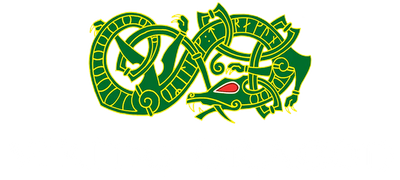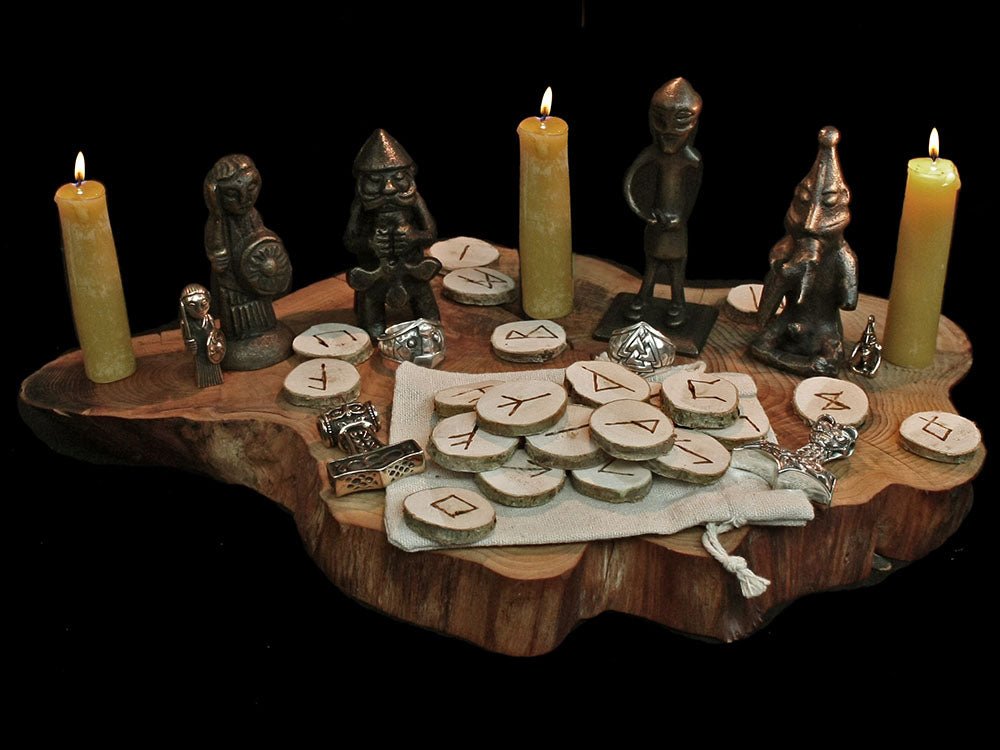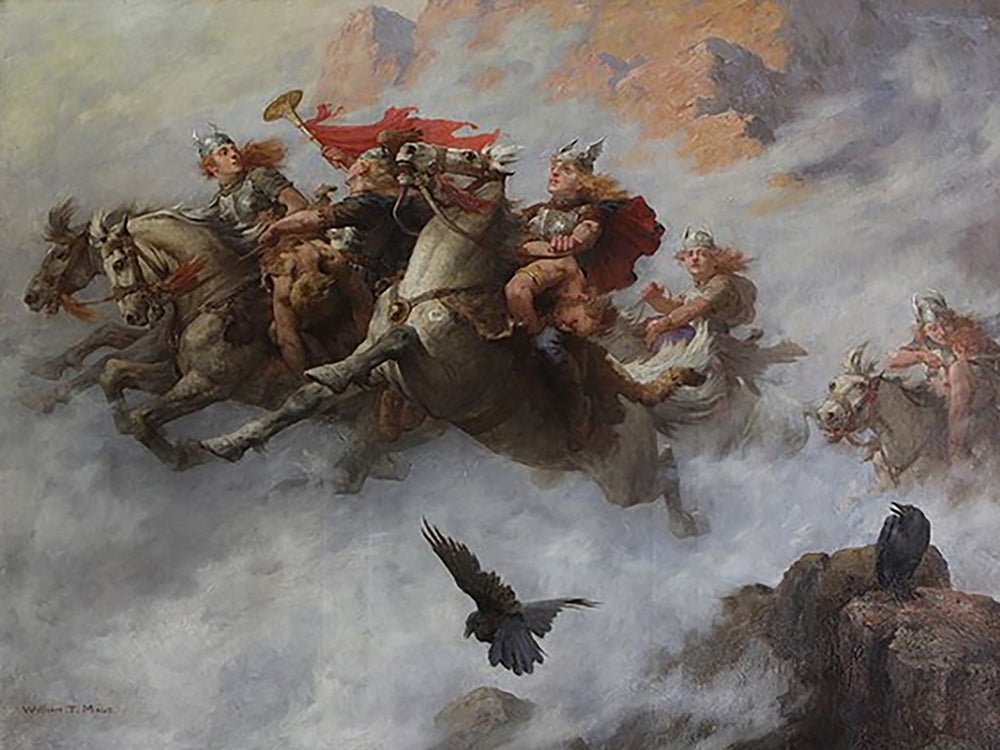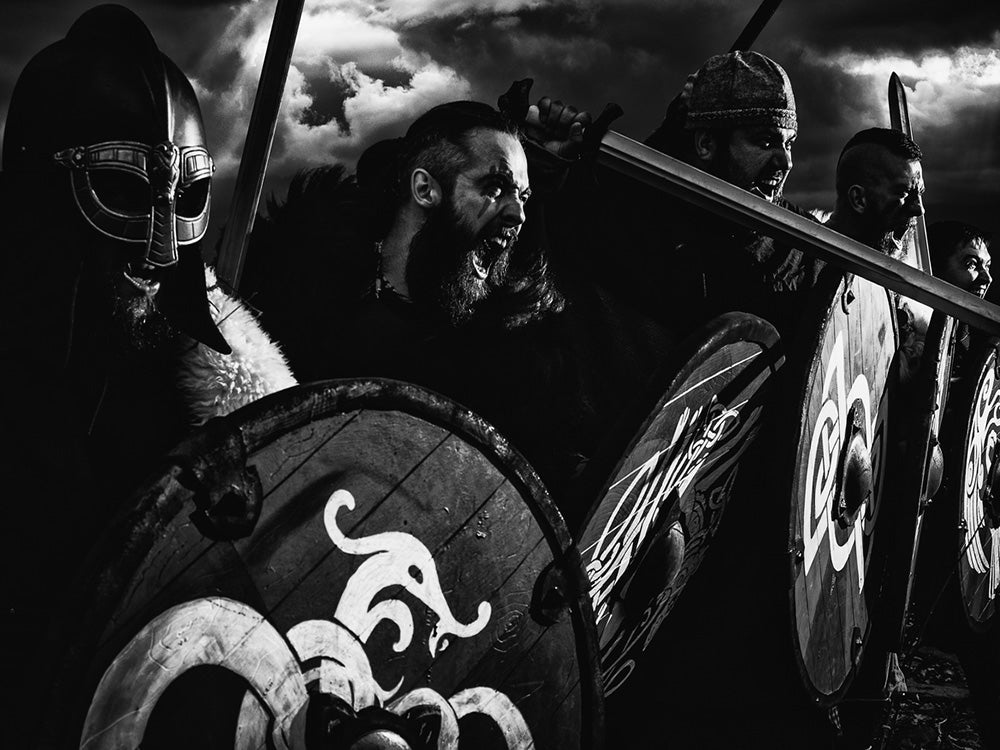Though the Viking Age has long since passed, the echoes of Norse culture and mythology still resonate in modern Nordic society. No-one holds these millennia old traditions more sacred than the followers of Asatru, a modern revival of Viking religion which is steadily gaining momentum. Asatru is the fastest growing religion in Iceland and has spread through the former Viking heartlands of Scandinavia and even further afield to the UK and US. Over 1000 years since Iceland became Christian, more and more Icelanders are finding their way back to the old gods.
The word ‘Asatru’ roughly translates to ‘true to the Æsir’ - the main pantheon of Norse gods including Odin, Thor, Freja, Frey and Baldr. Followers practise traditional Viking rituals, celebrate Old Norse festivals and study the works of Snorri Sturluson in faith groups based on Viking Age communities. But that isn’t to say that everything has been lifted directly from the past. With values of acceptance, peace and environmentalism, Asatru is a fascinating reconstruction of Viking religion fit for the modern day.
The Revival

Iceland became Christian in the year 1000, not through war and bloodshed but by an act of parliament. At this time, most Icelanders still worshipped the old Norse gods, though a growing Christian community meant that the population was essentially following two different legal codes. From the year 1000, Icelanders were still permitted to follow the old religion in private, but they had to abide by Christian laws publicly. Within just one generation, almost the entire population had converted to Christianity.
Almost 1000 years later, the spark of the pagan revival was ignited in a Reyjkevik cafe. Four friends, Sveinbjörn Beinteinsson, Jörmundru Ingi Hansen, Dagur Þorleifsson and Þorsteinn Guðjónsson, sat around a table and discussed the idea of founding a pagan congregation based on the belief in hidden forces in the land and the connection because the natural and human world. These four would go on to be the first leaders of the Ásatrúarfélagið, the first and largest official Asatru organisation.
When Beinteinsson applied to register Asatru as an official religion, he was initially greeted with push-back from the Ministry of Justice and Ecclesiastical Affairs and ridicule in the press. Just as it looked like Asatru would not get off the ground legally, the ministry’s hand was pushed by the Bishop of Iceland, who wrote in an open letter that denying the pagan congregation legal recognition was a flagrant disregard for freedom of religion. Asatru was officially recognised by the Icelandic government in 1972.
The Spread
The Ásatrúarfélagið received a fair amount of media coverage in Iceland when it was first founded, but when the congregation held its first public blót (celebration), the event’s coverage went international. Asatru followers at the first blót were outnumbered by Icelandic and international journalists. Though their numbers were few, everyone in the country knew who the Ásatrúarfélagið were.
For the next two decades, the number of followers rose slowly but steadily. It was only in the early 1990s that their numbers began to skyrocket. In 1993, Sveinbjörn Beinteinsson, the allsherjargoði (high priest), passed away and, just like at the first blót twenty years early, the press gathered round to see his successor elected. This time, the media interest translated into members of the public joining the religion. Official members of the congregation more than tripled between 1994 and 2002.
It was also around this time that Asatru began to spread outside of Iceland. The Swedish government recognised Asatru in 1994, closely followed by Norway and Denmark in 1996 and 1997. The movement also garnered interest outside of the Viking heartlands, with congregations popping up in the UK, Ireland and the USA.
Since 2002, Asatru has grown by around 15% every single year, making it Iceland’s fastest-growing religion and the largest non-Christian faith. Today there are more than five thousand official members of the Ásatrúarfélagið, and even more who attend the public blót. In 2015, the organisation began construction on the first pagan temple in Iceland in over 1000 years. The Hof will be located just outside downtown Reykjavik, and will have enough space for 250 followers to gather together to worship the Norse gods.
The Teachings
Asatru congregations are organised as small communities based on the structure of a Viking-era village. These local groups each have their own goði - a priest who carries out blót and rituals such as weddings and funerals. There are several main celebrations in the year when followers gather to honour a specific god. These festivals are:
- Jólablót on the Winter Solstice, in honour of Freyja
- Sigurblót on the first day of summer, in honour of Frey
- Sumarblót on the summer solstice, to celebrate human law and society
- Veturnáttablót on the first day of winter, in honour of Odin
Blót can also be organised whenever there is a specific need in the community, such as to ask the gods for health, luck, strength in the face of adversity or a good harvest. In this case, the congregation will leave offerings to a specific god with authority over their specific situation, or all the deities in a ceremony called an All Gods Blót.
Asatru differs from most modern religions in that it doesn’t have any written teachings. Instead, followers are encouraged to read the Prose Edda and the Poetic Edda. There have also been books written by Asatru leaders about Norse history and religious practice, such as the collection of Rimur (Icelandic poetry) by the first high priest Sveinbjörn Beinteinsson.
A Modern Religion
Though the Asatru religion is based on Viking-era tradition, it has also been shaped around the values and goals of the present-day. All of the official Asatru congregations in Europe stress that they are an accepting and welcoming community, taking members of any gender, race or sexuality. While previous attempts at reviving Norse folk religion in the 19th and 20th centuries often used Viking-age symbols to promote nationalism, militarism or xenophobia, the Asatru High Priests have all been outspoken in rejecting this practice.
According to Hilmar Örn Hilmarsson, the High Priest of Ásatrúarfélagið, people are drawn to the religion by its focus on harmony, humility and peace. Though based on old traditions, Asatru is also tinged with modern values of acceptance and protection of the environment, making it a fascinating fusion of Viking-age and modern Scandinavian beliefs.








